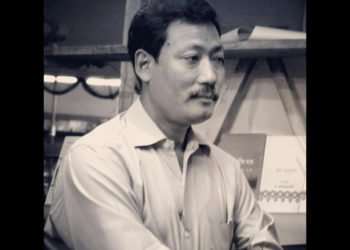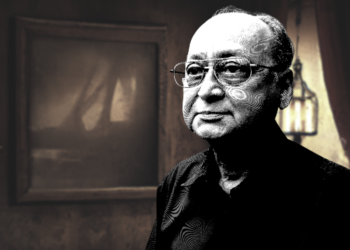The Lok Sabha recently passed the Assisted Reproductive Technology Bill. Soon to be tabled in the Rajya Sabha along with the Surrogacy Bill, the Bills provide necessary regulation in the ART sphere, albeit continuing to apply heteronormative values to determine eligibility, writes GAURI ANAND.

The Assisted Reproductive Technology (Regulation) Bill, 2021 (ART Bill) was passed by the Lok Sabha on December 1. First introduced in September 2020, the Bill seeks to regulate ART clinics (premises equipped with requisite facilities and medical practitioners registered with the National Medical Commission for carrying out the procedures related to ART) and banks (organisations that supply sperm or semen, oocytes or oocyte donors to ART clinics or their patients) and to ensure ethical practice in a long unregulated sphere. Though the ICMR had laid down guidelines on these practises in 2005, these lacked legislative backing.
The Surrogacy (Regulation) Bill, 2019, which was passed in the Lok Sabha in 2019, was referred to a Select Committee that recommended that the ART Bill be brought first, so that relevant technical aspects could be incorporated into the former.
The ART Bill defines ART as “all techniques that attempt to obtain a pregnancy by handling the sperm or the oocyte outside the human body and transferring the gamete or the embryo into the reproductive system of a woman.” ART clinics and banks in India have been providing services including gamete donation, intrauterine insemination, in vitro fertilisation, and intracytoplasmic sperm injections, among others.
Regulation of ART practises
The Bill aims to set up a National Assisted Reproductive Technology and Surrogacy Board under Section 15 of the Surrogacy Act. Provisions of the Surrogacy Act relating to the constitution of the board, terms of office, meetings, vacancies, disqualifications, temporary association of persons, authentication of instruments, and eligibility will apply mutatis mutandis in relation to ART. The Board will advice the Central Government, review and monitor the implementation of the Act, lay down the code of conduct for employees of clinics and banks, set minimum standards for infrastructure and other aspects of equipment and manpower and clinics and banks, oversee the performance of bodies created under the Act, and supervise the functioning of the National Registry. State ART Boards will also be established to aid the National Board at the state level.
Under the Bill, every ART clinic and bank must be registered under the National Registry of Banks and Clinics of India. The Registry is meant to act as a central database for all facilities providing ART services in India, with state governments appointing relevant authorities in their respective states to facilitate the registration process. Registrations must be renewed every five years and may be cancelled or suspended if an entity contravenes the provisions of the Bill.
The central and state governments will set up appropriate authorities that will comprise a chairperson, who will be an officer above the rank of Joint Secretary in the Health Department; a vice-chairperson, who will be above the rank of the Joint Director in the Health Department; an eminent woman representing a women’s organisation; an officer of the Law Department, and, an eminent registered medical practitioner. The authority will grant, suspend, or cancel the registration of ART centres; enforce standards and supervise the implementation of the law; investigate complaints regarding the breach of provisions, take legal action against the misuse of ART and initiate independent investigations; and recommend to the National and State Boards modifications to the regulation with the evolution of technology and social conditions.
Under the Bill, every ART clinic and bank must be registered under the National Registry of Banks and Clinics of India, which will act as a central database for all facilities providing ART services in India.
Conditions of donation, supply, and services
ART banks are the only bodies authorised to screen gamete donors, collect and store semen, and provide oocyte donors. Semen can only be obtained from males between the ages of 21 and 55, and oocytes may only be obtained from females between the ages of 23 and 35. A woman can only donate oocytes once in her life, and not more than seven oocytes can be retrieved from her. Furthermore, a bank cannot supply the gamete of a single donor to more than one commissioning couple. A gamete may not be stored for a period longer than ten years, after which time it may be destroyed or donated for research with the permission of the commissioning couple or individual.
ART services can only be provided after obtaining the written informed consent of the parties seeking the ART services, as well as the donor. The commissioning couple will be required to provide insurance coverage from an insurance company to the oocyte donor, to cover specified losses, damage, complications, or the death of the donor during the process. ART clinics are required to check for genetic diseases before the implantation of the embryo, and cannot offer to provide a child of a pre-determined sex. Furthermore, the sale, transfer or use of gametes, zygotes and embryos, or any part thereof or information related thereto, directly or indirectly within or outside India is prohibited, except in cases of personal use where individuals transfer their own embryos and gametes with the permission of the National Board.
ART clinics are required to check for genetic diseases before the implantation of the embryo, and cannot offer to provide a child of a pre-determined sex.
Rights of the child
A child born using ART is deemed the biological child of the commissioning couple or individual and is entitled to the same rights and privileges as a natural child. The donor must relinquish all parental rights over children born from his or her gamete.
Offences and penalties
The provision of sex selective ART will be punishable with imprisonment for a term that may extend between five and ten years or with a fine between INR 10 and 25 lakhs or both.
The Bill also makes provisions for a number of offences including (i) abandoning, or exploiting children born through ART, (ii) selling, purchasing, racketing, trading, or importing human embryos or gametes, (iii) exploiting commissioning couple, woman, or the gamete donor in any form, (v) transferring the human embryo into a male or an animal, (vi) selling an embryo or gamete for research, and (vii) using intermediates to obtain or purchase donors.
All of these offences are punishable with a fine between INR 5 and 10 lakhs at the first instance and a fine between INR 10 and 20 lakhs with imprisonment for a term between eight and twelve years for every subsequent contravention.
Furthermore, no court may take cognizance of any offence punishable under this Act, except in pursuance of a complaint made by the National Board or the State Board or by an officer authorised by them.
Lacunae
As was pointed out in the debate in the Lok Sabha, the ART Bill discriminates against LGBTQI+ individuals, live-in couples, and single male parents. The law, at the core of it, goes against the spirit of the Supreme Court’s decision in Navtej Singh Johar, continuing to discriminate against same-sex couples in their right to raise a family. In this regard, it appears paternalistic and heteronormative values have driven both the Surrogacy Bill and the ART Bill, with the ART Bill defining a commissioning couple as an “infertile married couple” and the Surrogacy Bill restricting eligibility to Indian citizens married for at least five years, with no surviving children.
A child born using ART is deemed the biological child of the commissioning couple or individual and is entitled to the same rights and privileges as a natural child.
While the Bill aims to fill a significant gap in the regulation of reproductive technology in the country, the government must fulfil its constitutional obligation to treat citizens equally and rectify provisions that effectively establish classifications that have no rational nexus with the object sought to be achieved by the law.




